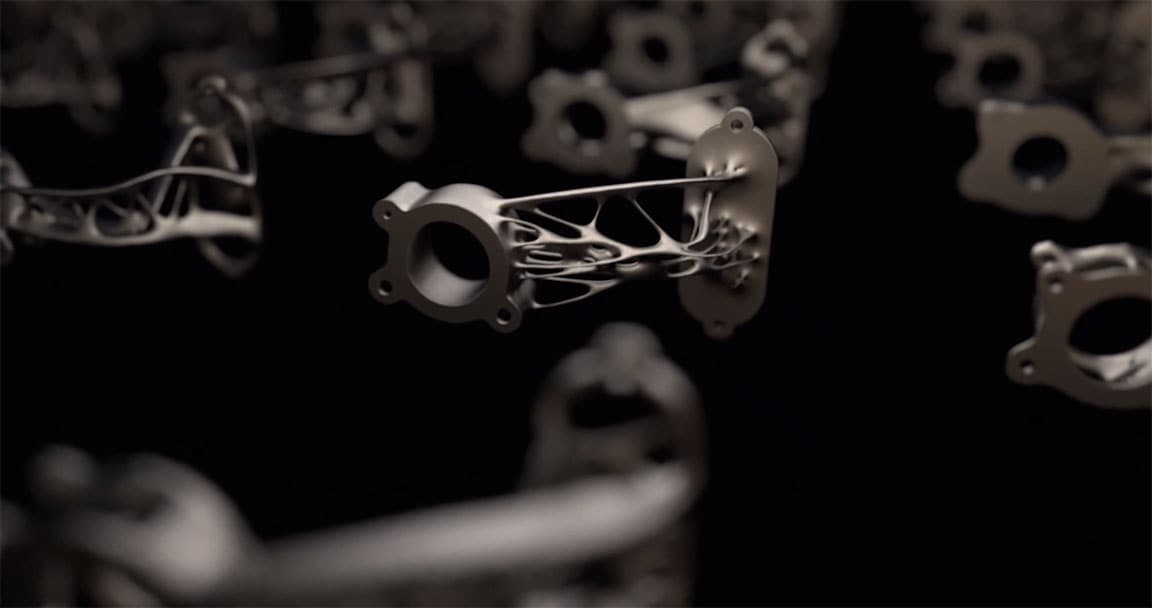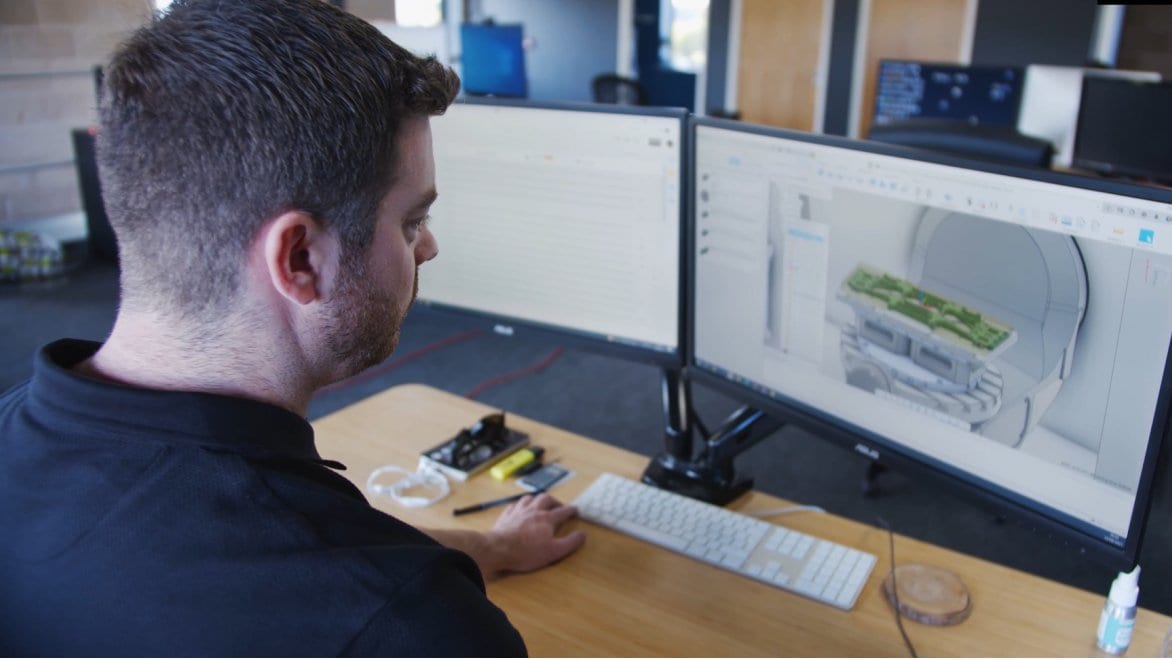Evolve
Discovering generative design
for CNC milling
Customer Story
Share this story
Evolve achieves 40% weight reduction on electric hypercar component using generative design and 2.5 axis machining
Evolve specializes in engineering high-quality bespoke systems and products, delivering cutting-edge solutions to motor sport, automotive, aerospace, medical, industrial equipment, and clean technologies industries. The team at Evolve has used Fusion 360 since 2016, but like many companies, they assumed generative design was too complicated, expensive, and best suited for additive manufacturing. Recently the team applied generative design to an electric hypercar component and quickly realized the time and cost-savings to design with artificial intelligence and ease of manufacturing parts on a CNC machine.

Evolve used generative design to lightweight components for an electric hypercar.
Photo courtesy of Evolve.
Generative design supports traditional fabrication
The team at Evolve prides itself on solving the toughest engineering challenges, so they are constantly exploring new technologies to help them to transform their design approach and add value to their growing design and manufacturing business.
Evolve’s first foray with a generative design project for an electric hypercar component quickly dispelled any initial thoughts they had about the AI-driven technology.
“I personally had this preconceived idea that generative design is a complex process, very expensive, and creates organic solutions that are more suited to additive manufacturing than CNC machining,” said Matt Hill, founder and CEO, Evolve. “This project focused on machine parts for the production of the vehicle. The challenge was to try and move that mindset to the fact that we could create something that was suited to 2.5 axis milling. It was a pretty obvious choice in hindsight.”

AI drives cost-effective manufacturing solution.
Photo courtesy of Evolve.
Explore multiple design solutions driven by AI
With an electric vehicle, weight reduction is even more important to hit performance and range targets. For the component, Evolve also focused the requirements of their generative design in terms of strength, performance, and stiffness. Most critically, it had to be optimized for CNC milling.
With these parameters in Fusion 360, the team could quickly see different options and choose their priorities for the component. They selected their preferred solution from the full set of design options—and what they landed on came as a surprise.
“It created something that was very interesting and aesthetically pleasing that perhaps we wouldn't have created if we'd have done this from a traditional design method,” Hill said. At the same time, Hill could then take the model, modify it, clean some surfaces and edges, and add a human element to it for a finished and polished product ready for manufacturing.
Generative design helps to reduce weight by 40%
In the end, the final electric hypercar component was a staggering 40% lighter than when they started and the project was completed in record time. That’s just the beginning as Evolve moves generative design into more projects.
“We're really looking forward to having this as a tool in our toolbox for the future, to make our design process more efficient, and add value to our customers going forward,” Hill said.